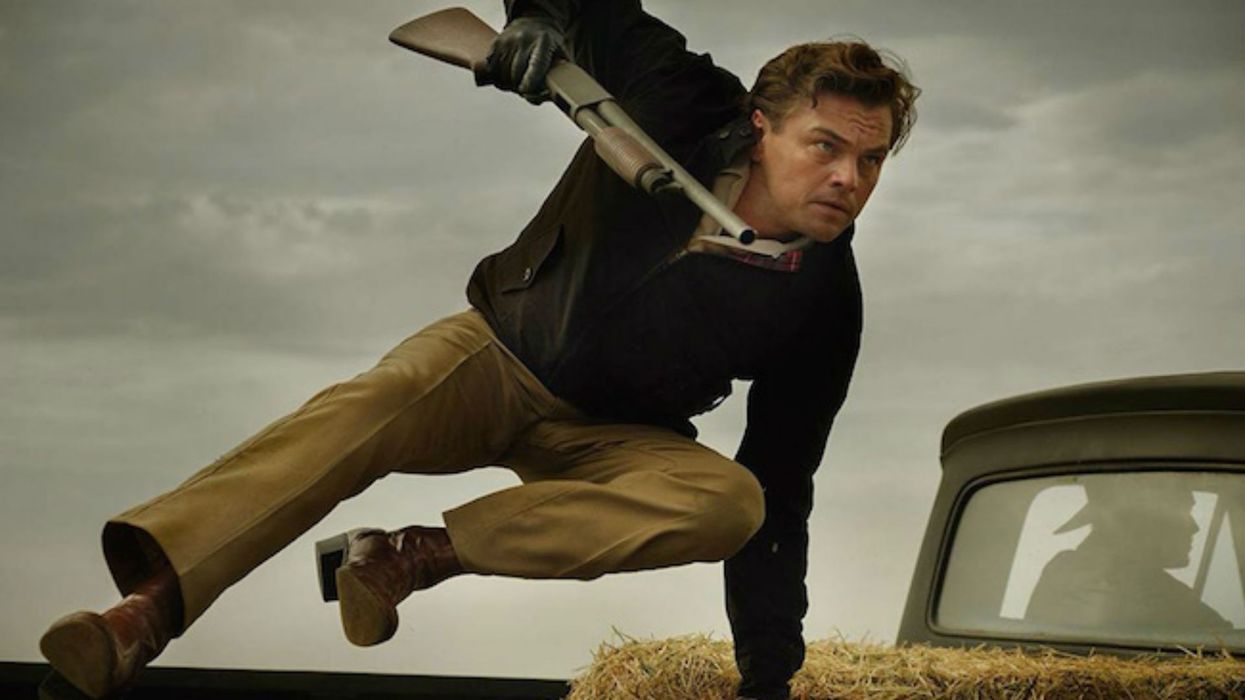Robert Richardson Reveals How 'Once Upon a Time In Hollywood' Got Those Great Shots
Robert Richardson is a cinema legend. Here's how he and Quentin Tarantino pulled off their latest masterpiece.

The Oscar-winning cinematographer is one of the greatest the industry has ever seen. His resume is as envious as his shooting style: JFK, The Aviator, Natural Born Killers, and, now, Once Upon a Time In Hollywood. His sixth collaboration with Tarantino is garnering some of the best notices of their careers, with much attention paid to the DP's elegant and deft approach to bringing his director's languid and dream-like vision of 1969 Los Angeles to life.
In a recent interview with Uproxx's Mike Ryan, Richardson spilled all the tea on his working relationship with the auteur and how the two worked to pull off the film's unique visual pallet. This interview is the equivalent of a guest speaker coming to your classroom for an hour, and some of Richardson's insights into his process -- and into filmmaking in general -- could be helpful to your career. Find out how below. SPOILER WARNING: Do not read further if you have yet to see the movie.
Brad Pitt's Fast Drive Through Hollywood
"Well, first of all, that was Brad [as stuntman Cliff Booth] driving. He also is the one who pulled out, when you get that great music cue that pops in there. He just left Leo behind and switches to the other car, to the Karmann Ghia. He pulls out and then it just hits us, that beautiful music. But then the camera’s mounted behind him. The truth of the matter is, Brad is a stunt person. Let’s get real. Down Hollywood Boulevard, I’m not gonna say this for sure, but I’m betting he’s in the 50 mile an hour zone."
"It’s flying down that road. We were struggling with a camera car to keep up with him. That’s how fast he’s driving, but he’s fully in control. It wasn’t anything that was even vaguely a question mark. He wasn’t going to let somebody else drive it. Although, we had somebody to drive it if he wished to have that way. But he was so in control of the car that it was not a problem."
How They Shot That Scene-Within-a-Scene for Lancer
Rick Dalton (Leonardo DiCaprio) spends a memorable portion of the film's run time shooting a guest spot for a pilot, the classic western TV series, Lancer. There, Dalton plays the "heavy" and interacts with the hero and series lead, played by Timothy Olyphant. The scene unfolds in one expertly-shot oner, an impressive feat not lost on Richardson.
"We did coverage on that sequence. We did a cutaway to the [TV show] director, telling him, 'No, no, no, keep going.' And what I loved is that Quentin did it in one take without breaking it, and it’s absolutely perfect. You think you’re in the middle of this movie, and then suddenly he says, 'Line!' You’ve gone through about six or seven shots, maybe eight shots, whatever it is. And then suddenly there’s this 'Line.' Huh? And they nailed it perfectly. And the camera came back to exactly the same spot."
The takeaway here, gang? Always get your coverage.
Even if you planned and boarded for a oner, coverage is key. The last thing you want in the editing room is the type of surprise that isn't pleasant when it comes to seeing what footage you have for assembly.
Those Two Amazing Crane Shots
In the movie, there are two different-but-similar crane shots that sweep over the top of a 1969 drive-in and the roof of Dalton's Hollywood home, respectively. As impressive as they are in-camera, the drive-in shot required some visual effects movie magic.
"The shot that you’re talking about with the Van Nuys drive-in, that shot is done by me from the outside on a crane, tracking across past the first board which lists Lady in Cement. The entire drive-in element we lifted it up, but it was basically a green screen, which (Visual Effects Designer) John Dykstra built because we could not get to the height and we didn’t have a real cinema to get. So everything, once we move into the drive-in, it’s made by John Dykstra. We twist over the top where the light flares and you see all the cars behind."
"And the other one [at Dalton's house] starts in the pool. It’s a very massive remote control, basically very similar to what a techno crane would be, but it’s the largest one possible. And so you have to, we had a remote head in, or reached over the top of, the Polanskis’ house and got relatively close, but I had to add a zoom into it to get a little closer to it, and then we zoomed and tracked back and boomed down into that medium shot that you saw where Roman comes out the door with Sharon and gets into their car and drives off. That same unit was used for the final shot, where [Dalton] walks up with Emile (Hirsch) towards the house, and that’s where that one goes and we flipped over the top of the other house to look down."
The how-to guide Richardson provides above, especially on the uses of remote control/motion control shots and a techno crane, is the type of insightful commentary that fans used to get on DVDs and Blu-ray. Such content is few and far between lately on home entertainment releases, so consider this interview the written equivalent of a very special bonus feature.
Once Upon a Time In Hollywood is now playing in theaters everywhere.
What's your favorite shot in Tarantino's new movie and why? Your favorite scene? Let us know in the comments!
Source: Uproxx














